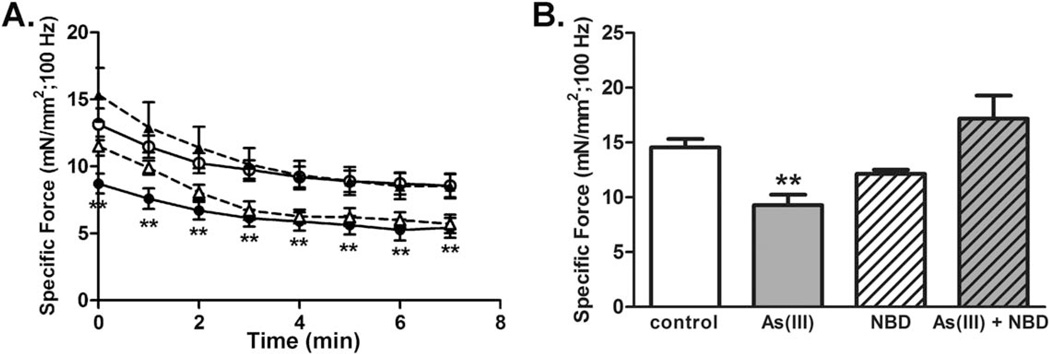Figure 6.
Inhibition of NF-κB during As(III) exposure preserves skeletal muscle recovery after an acute injury. (A): In situ contractile testing 4 weeks after an acute injury revealed that As(III)-exposed muscles (closed circles, n = 7) displayed decreased specific tetanic force when stimulated at 100 Hz, relative to control (open circles, n = 6). The As(III)-exposed muscles also failed to recover to control levels of tetanic force by 10 minutes after fatigue (B). Inhibiting NF-κB with eight lysine protein transduction domain (8K)/NEMO binding domain (8K-NBD) peptide (open triangles, n = 3) during the exposure period did not affect the recovery from injury of specific force (A) or recovery from fatigue (B), relative to controls. However, inhibiting NF-κB in As(III)-exposed mice (closed triangles; n = 4), prevented As(III)-related decreases in all three muscle endpoints. **, p < 0.01. In (A), As(III) and 8K-NBD are significantly less than Control and As(III)+8K-NBD. In (B), As(III) is significantly different from control and As(III)+8K-NBD. Abbreviation: 8K-NBD, eight lysine protein transduction domain (8K)/NEMO binding domain.

